|
What a year 2018 was for us at Femfilmfans. We launched our site, wrote lots of great content, interviewed some fabulous filmmakers and grew our Femfilmfam. We really can’t thank you enough for all your love and support this past year! Christina Fem: My feminist highlight of 2018 was without a doubt Remake. Frankfurter Frauen Film Tage this past November. I met so many amazing women, watched inspiring feminist films, learned an incredible amount about the women’s movement all over the world, and so much more. Film: They by Iranian filmmaker Anahita Ghazvinizadeh. I watched it at the Berlin Feminist Film Week and it made a lasting impression on me. The film focuses on a gender non-conforming teen, raising awareness for this overlooked demographic. I also found Ghazvinizadeh’s camerawork incredibly skilled. They is a film I highly recommend to all our FemfilmFans (read my review of the film here). Fans: I’m going to cheat and list two things...1) I became a huge fan of the Netflix show One Day At a Time, a recommendation from our very own Lissy (read her review of the show here); 2) I fell in love with Hannah Gadsby this year, therefore I want everyone to watch at the very least Hannah Gadsby’s special Nanette (read Christian Berger’s review here) so they can become her fans, too. (left) Poster for Remake. Frankfurter Frauen Film Tage; (center) Film poster for They; (top right) Title screen for One Day At a Time; (bottom right) Promo poster for Hannah Gadsby's Netflix special Nanette Marina Fem: My feminist highlight of 2018 was interviewing filmmaker Natalie MacMahon. Natalie is a director, actress and festival founder all in one person! I was impressed by her work quantity and quality and I am looking forward to meeting her again next year when the first edition of the Female Filmmakers Festival Berlin kicks off in June 2019. I am sure the festival will be a great opportunity for female filmmakers to connect with and support each other. Film: Admittedly, I am a huge fan of the 80s, especially its music. So Netflix show GLOW, set in the 80s. had an easy time winning me over. I love the female cast with its original and unique characters, the complex story of emancipation and the struggles with patriarchy in show biz. And guess what? The music is great as well (read my review of the show here). Fans: I became an even bigger fan of all women in film and TV. I am now paying more attention to the “hard facts” of film production. How’s the cast set up? How many women participate in the production of a film? And I am amazed by the amount of talented women worldwide who are no longer waiting for their opportunities in the film business but taking action. Lissy Fem: Like Christina and the rest of the world, I was awed by Hannah Gadsby’s Netflix special Nanette and it was definitely one of the most important feminist moments in 2018 for me. Gadsby not only managed to redefine stand-up comedy and call out the abundance of toxicity in the genre and in art in general, but also managed to make everyone cry, laugh and feel amazed by this strong, humble and incredibly intelligent woman. Her show is a philosophical manifesto and a poetic piece of art that should belong to the feminist canon. Film: Since I love television shows, I want to point out my favorite one from this past year: Crazy Ex-Girlfriend. This is a show that is very hard to define as “just” a comedy. It uses the trope of a rom com, but puts the genre on its head by bringing in complex issues and different female perspectives. It’s still hilarious and the musical numbers are so much fun even if you typically do not care for musicals. I can’t wait to watch the fourth and final season - it will be available on Netflix soon. You can read my review of the first three seasons here. Fans: This year, I became a huge fan of Awkwafina after seeing her on screen in Crazy Rich Asians. Not only is she incredibly funny and talented, but her performance was so unique that she really stood out to me when watching the extraordinary cast of Crazy Rich Asians. Also, she is a fantastic rapper and I encourage everyone to check her out on Spotify. (left) Fan art by Sogayjen with a quote from Hannah Gadsby's Nanette; Promo poster for Crazy Ex-Girlfriend starring Rachel Bloom; Awkwafina as Peik Lin in Crazy Rich Asians Before we sign off, we want to sincerely thank everyone who helped, supported and encouraged us this past year. We hope to bring you many great things in 2019 and want to wish our Femfilmfam an empowered, enlightened and femtastic New Year!
And before you sign off, don't forget to like this post, leave us a comment with your favorites of 2018 and share the post with your loved ones. If you don't already, you can also like us on Facebook, follow us on Instagram or send us an email with your suggestions, film event information, ideas for collaborations with us or whatever else floats your boat! Just click on the social media icons below.
2 Comments
The Breast in Hollywood: |
| Note: This highly opinionated post originates from my other blog, The Love Chronicles, and originally focused on La La Land (although it has been drastically altered). However, I thought some of the themes were relevant for Femfilmfans. You can read the old post from February 2017 here: tinskies.blogspot.com/2017/02/la-la-lame.html. |
The Oscars were all the way back in February yet I couldn’t help but think that those who were shocked, upset or angry with the fact that Moonlight (Barry Jenkins, 2016) won the Oscar for Best Picture in 2017 felt similarly about the fact that The Shape of Water (Guillermo del Toro, 2017) won the Oscar for Best Picture in 2018. Why could the past two winners for Best Picture cause such an uproar? Personally, I think the Oscars, and Hollywood at large, while not perfect entities – because let’s face it, they’ve f*cked up a lot and perpetuate so much that makes the industry so problematic – made the right decisions these past two years. Decisions that show audiences worldwide the U.S. film industry is moving away from the mainstream, the conventional, the heteronormative, the blandness, the whiteness and the head-up-the-assness of Hollywood.
Naturally audiences will react to such decisions (especially after the brilliant envelope slip up, #schadenfreude) and react they did. But how hard is it to understand that audiences consist of, well, every type of person on the spectrum of human beings? So instead of giving awards to a small sliver of this spectrum, i.e. straight white people, for films about said spectrum, we might actually be able to, or even should, bestow awards on “different” films? How could so many people say films like Moonlight or The Shape of Water are garbage, disgusting or indecent? They most certainly are not, especially if you view films with an open mind and fully comprehend the power of images. But yet I kept reading and hearing: *Sex with a fish man? Gross. *A love story between gay black men? Revolting. *La La Land [or other film nominated for Best Picture] was such a great film. You are entitled to your personal opinions, although I respectfully have to disagree with you, because the past two Best Picture winners certainly deserved the Oscars for so many reasons, and more importantly not because they were objectively “good films” (a term one tends to use lightly).
Naturally audiences will react to such decisions (especially after the brilliant envelope slip up, #schadenfreude) and react they did. But how hard is it to understand that audiences consist of, well, every type of person on the spectrum of human beings? So instead of giving awards to a small sliver of this spectrum, i.e. straight white people, for films about said spectrum, we might actually be able to, or even should, bestow awards on “different” films? How could so many people say films like Moonlight or The Shape of Water are garbage, disgusting or indecent? They most certainly are not, especially if you view films with an open mind and fully comprehend the power of images. But yet I kept reading and hearing: *Sex with a fish man? Gross. *A love story between gay black men? Revolting. *La La Land [or other film nominated for Best Picture] was such a great film. You are entitled to your personal opinions, although I respectfully have to disagree with you, because the past two Best Picture winners certainly deserved the Oscars for so many reasons, and more importantly not because they were objectively “good films” (a term one tends to use lightly).
Allow me to use fan favorite La La Land as an example to prove why Moonlight and The Shape of Water deserved to win. La La Land is a simultaneous tribute to and self-aggrandizement of white Hollywood. Emma Stone and Ryan Gosling, who are just so darn cute, are not professional singers or dancers, and I would argue even their acting skills are lacking. They are nothing more than pretty white people and Hollywood has plenty of them. Despite all the buzz around the movie, it by no means deserved Best Picture. Dramas almost exclusively take home the Oscar, so if Warren Beatty had been right and La La Land won, not only would Hollywood be upholding its own superiority but it would have neglected to make an important political statement at this crucial time in American history. Moonlight was the first film with an all-black cast and the first LGBT film to win the Oscar for Best Picture. Think about that for a minute. One year later, The Shape of Water wins, a film in which “love trumps hate, monsters become lovers and freaks, geeks and the typically marginalized become heroes” (tiff_net). In other words, a mute woman (Sally Hawkins), her African-American friend (Octavia Spencer), a Russian scientist and a gay man (as it turns out, all types of people hated by 1950s conservative America, which sadly still seems true today) rescue a beautiful, highly intelligent creature from white men in power because they are willing to give it a chance and open their hearts. Two bold and aesthetically beautiful films featuring marginalized people that challenge the status quo. I could not think of more deserving films!
And before people say I'm a jerk or not giving the La La Land crew any credit for their work, let me explain why I'm writing this. While I enjoyed the film to a degree, it still left me cold, mainly because of the singing and the dancing and its retelling of an all-too familiar story. Besides representing white Hollywood, it was nothing like the ultimate musical from the 1950s. You know the one I'm talking about. Wait, you don't? Then let me tell you about it...
And before people say I'm a jerk or not giving the La La Land crew any credit for their work, let me explain why I'm writing this. While I enjoyed the film to a degree, it still left me cold, mainly because of the singing and the dancing and its retelling of an all-too familiar story. Besides representing white Hollywood, it was nothing like the ultimate musical from the 1950s. You know the one I'm talking about. Wait, you don't? Then let me tell you about it...
Gene Kelly and Stanley Donen's 1952 musical, Singin' in the Rain, is to this day considered one of the best Hollywood pictures ever. And why you might ask? Because so much work went into the film. It is a masterpiece of choreography, musical composition, cinematography, acting, set design and screenwriting. Gene Kelly, Donald O'Connor and Debbie Reynolds, may they all rest in peace, danced and sang up a storm (get it? Singin’ in the Rain...storm?). However, the three main actors did not particularly like each other. Gene Kelly was such a notorious tyrant and taskmaster on set that he had a voice double (Betty Noyes) for Debbie Reynolds when she couldn't cut it and he had his co-stars frightened and upset by his incessant push for perfection.
And the craziest part of all? Debbie Reynolds wasn't a dancer (see below). Gene Kelly trained her so hard that you wouldn’t know she wasn't just as skilled as the others. Even though this is problematic (which I should probably address in another post), that is hard work. That is love for your craft. That makes history. Singin’ in the Rain is the far superior musical. Oh, and it has already been done. In 1952.
To connect the main threads here: we are moving beyond the time of the pretty white people in Hollywood; we are moving beyond the one-dimensional representation of the world; we are honoring the work and stories of people who have so often been marginalized in Hollywood and the film industry at large. And that is why La La Land is La La Lame.
And the craziest part of all? Debbie Reynolds wasn't a dancer (see below). Gene Kelly trained her so hard that you wouldn’t know she wasn't just as skilled as the others. Even though this is problematic (which I should probably address in another post), that is hard work. That is love for your craft. That makes history. Singin’ in the Rain is the far superior musical. Oh, and it has already been done. In 1952.
To connect the main threads here: we are moving beyond the time of the pretty white people in Hollywood; we are moving beyond the one-dimensional representation of the world; we are honoring the work and stories of people who have so often been marginalized in Hollywood and the film industry at large. And that is why La La Land is La La Lame.
For more information about Singin' in the Rain, click here:
http://www.filmsite.org/sing.html
*Note: I know my audience largely consists of intelligent, worldly people, so please understand this is a Schultzian rant about the film industry and is not directed at my readers! I thank you for taking the time to read and support my work, and the work of my team, at Femfilmfans. So please, do not in any way feel offended. Or if you are offended, let me know! Or if you disagree. Or if you love it. Any feedback is good feedback. I love to hear what my readers think.
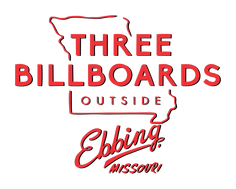 (photo: Mavelus, Wikimedia)
(photo: Mavelus, Wikimedia) By Christina Schultz
Words of warning: If you have not seen Three Billboards Outside Ebbing, Missouri, be warned that the plot will be discussed in this editorial post. You should also be warned that the opinions expressed here, including those about rape, belong solely to the author.
If I were the mother of a teenage girl who was “raped while dying,” the text from the first of the three eponymous billboards, would I be moved to violence? The answer is simple: Yes. In Three Billboards Outside Ebbing, Missouri (Martin McDonagh, 2017), the mother of dead rape victim Angela Hayes is certainly that. At first, Mildred (Frances McDormand, Oscar for Best Actress) takes out the brunt of her anger, grief and frustration on the local police because: “Still no arrests?” (billboard #2). She provokingly poses the question directly to the town’s well-liked police chief on the final billboard: “How come, Chief Willoughby?” Mildred’s three billboards and her subsequent acts of vehement hostility against the justice system that has seemingly failed her then set off a chain of events that will change the little town in many ways.
Words of warning: If you have not seen Three Billboards Outside Ebbing, Missouri, be warned that the plot will be discussed in this editorial post. You should also be warned that the opinions expressed here, including those about rape, belong solely to the author.
If I were the mother of a teenage girl who was “raped while dying,” the text from the first of the three eponymous billboards, would I be moved to violence? The answer is simple: Yes. In Three Billboards Outside Ebbing, Missouri (Martin McDonagh, 2017), the mother of dead rape victim Angela Hayes is certainly that. At first, Mildred (Frances McDormand, Oscar for Best Actress) takes out the brunt of her anger, grief and frustration on the local police because: “Still no arrests?” (billboard #2). She provokingly poses the question directly to the town’s well-liked police chief on the final billboard: “How come, Chief Willoughby?” Mildred’s three billboards and her subsequent acts of vehement hostility against the justice system that has seemingly failed her then set off a chain of events that will change the little town in many ways.
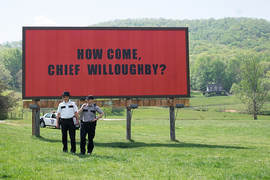 Chief Willoughby and Officer Dixon (photo: Tanuki's Magic Box)
Chief Willoughby and Officer Dixon (photo: Tanuki's Magic Box) When Mildred realizes Chief Willoughby (Woody Harrelson in fine form), Officer Dixon (Sam Rockwell, Oscar for Best Supporting Actor) and the rest of the Ebbing, Missouri police force are not the bad guys, her hatred of the unknown bad man takes over. The end of the film has Mildred and Dixon embarking on an assassination road trip to Idaho where – get this – a rapist lives. Not the rapist. But you know what? I’m going to be real honest here, and I know a lot of people will find this controversial or offensive, I agree with Mildred and her approach to rapists. Maybe I wouldn’t actually become a cold-blooded murderer or really contemplate killing someone, but if I was in her shoes, I would damn sure want to do something about it. And perhaps I wouldn’t be able to bring the defiler of my little girl to justice, whether I were on the right side of the law or not, but I could bring the rapist of someone’s little girl to justice.
Too often we ignore rape victims. Or the victims are afraid to speak out against their aggressors. We have seen it time and again. If a case does go to court, it is a messy tennis match of he-said, she-said, with the man’s reputation somehow remaining more or less intact post-trial (take Kobe Bryant, for starters). The women are portrayed as slutty, stupid bimbos who are either money hungry or just DTF or both. How is it better to deny what you did, to paint the woman in such a defamatory way, or better yet to plead ignorance when even a two-year-old knows what the words “no” and “stop” mean?
Even though we are living in the time of #MeToo and Time’s Up, why is it that so many of the women are still somehow forgotten? Why are their faces and voices not heard? Why is justice still not being served? Harvey Weinstein and Bill Cosby are just two, albeit major, examples but how many more men walk free? Why are women, or any victims of sexual assault, violence and abuse, still afraid to speak up? Why do we not listen to, support and help the victims even more? I am making the situation seem totally hopeless and it certainly is not all bad. Full disclosure: I am a rape victim - it is still incredibly painful to discuss - and have sought out the free and very necessary counseling services offered by Rape Victims Advocates in Chicago. There are great resources out there if you look but such programs and organizations are constantly struggling for funding. That is enough to make me want to pay for billboards all over the world...maybe my first crowdfunding campaign?
The three billboards “on a road no one goes down unless they got lost or they’re retards” (said at least twice in the film) and the woman who put them there, Mildred Hayes, vividly demonstrate what the fight could look like for things to really change. We need mouthier, fuck-all confidence. We need a better justice system. We need to get in people’s faces, perhaps slightly more respectfully than Mildred, and question their bullshit. We must call for action in rape cases, in abuse cases, in police brutality cases, in gunshot cases – the list goes on. I read the film as a call for action. The billboards tip the scales in Podunk, small town Ebbing, Missouri and this is what the country needs.
Time’s up!
Too often we ignore rape victims. Or the victims are afraid to speak out against their aggressors. We have seen it time and again. If a case does go to court, it is a messy tennis match of he-said, she-said, with the man’s reputation somehow remaining more or less intact post-trial (take Kobe Bryant, for starters). The women are portrayed as slutty, stupid bimbos who are either money hungry or just DTF or both. How is it better to deny what you did, to paint the woman in such a defamatory way, or better yet to plead ignorance when even a two-year-old knows what the words “no” and “stop” mean?
Even though we are living in the time of #MeToo and Time’s Up, why is it that so many of the women are still somehow forgotten? Why are their faces and voices not heard? Why is justice still not being served? Harvey Weinstein and Bill Cosby are just two, albeit major, examples but how many more men walk free? Why are women, or any victims of sexual assault, violence and abuse, still afraid to speak up? Why do we not listen to, support and help the victims even more? I am making the situation seem totally hopeless and it certainly is not all bad. Full disclosure: I am a rape victim - it is still incredibly painful to discuss - and have sought out the free and very necessary counseling services offered by Rape Victims Advocates in Chicago. There are great resources out there if you look but such programs and organizations are constantly struggling for funding. That is enough to make me want to pay for billboards all over the world...maybe my first crowdfunding campaign?
The three billboards “on a road no one goes down unless they got lost or they’re retards” (said at least twice in the film) and the woman who put them there, Mildred Hayes, vividly demonstrate what the fight could look like for things to really change. We need mouthier, fuck-all confidence. We need a better justice system. We need to get in people’s faces, perhaps slightly more respectfully than Mildred, and question their bullshit. We must call for action in rape cases, in abuse cases, in police brutality cases, in gunshot cases – the list goes on. I read the film as a call for action. The billboards tip the scales in Podunk, small town Ebbing, Missouri and this is what the country needs.
Time’s up!
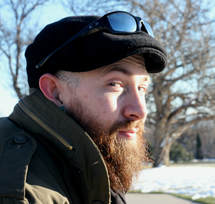 (photo: courtesy of Brace Bargo)
(photo: courtesy of Brace Bargo) By Guest Contributor Brace Bargo
Located in Berlin, Germany, Brace is interested in history, film and culture, and the way they resonate together. Having studied at University of Illinois at Chicago and Freie Unversität, he applies this background to find new ways to understand film that is relevant for critics and casual viewers alike. When not hidden behind the keyboard or movie screen, he dabbles in music, filmmaking and the hipsterest of craft beers.
Rain beat down as the audience wandered in the cryptically-labelled Kreuzberg courtyard trying to find the theater. The sign had been spotted: Sputnik Kino, 5th floor. Wait. Five stories up? Yes, five stories up. But there’s an elevator, right? No. The prize at the end of this journey was a collection of short films made by female filmmakers, presented by the Women’s Film Network Berlin and the short film Meetup Shortcutz. In the entrance, one gazed up at the task before them: stairwell after stairwell framed by raw walls and hanging wires. Upon reaching the first set of stairs one was greeted with an uplifting sign “No pain, no film” shortly followed on the next staircase with “This is so Berlin…” (written in English, which is itself quite Berlin). Perhaps the trial by stairs was meant as a taste of the struggle and pain of women in the film industry? The fight to reach the top only to receive a condescending pat on the head, rejection, or platitude? Whatever the reason, the struggle is always worth the reward when it comes to promoting the representation of the underrepresented in the media landscape.
Located in Berlin, Germany, Brace is interested in history, film and culture, and the way they resonate together. Having studied at University of Illinois at Chicago and Freie Unversität, he applies this background to find new ways to understand film that is relevant for critics and casual viewers alike. When not hidden behind the keyboard or movie screen, he dabbles in music, filmmaking and the hipsterest of craft beers.
Rain beat down as the audience wandered in the cryptically-labelled Kreuzberg courtyard trying to find the theater. The sign had been spotted: Sputnik Kino, 5th floor. Wait. Five stories up? Yes, five stories up. But there’s an elevator, right? No. The prize at the end of this journey was a collection of short films made by female filmmakers, presented by the Women’s Film Network Berlin and the short film Meetup Shortcutz. In the entrance, one gazed up at the task before them: stairwell after stairwell framed by raw walls and hanging wires. Upon reaching the first set of stairs one was greeted with an uplifting sign “No pain, no film” shortly followed on the next staircase with “This is so Berlin…” (written in English, which is itself quite Berlin). Perhaps the trial by stairs was meant as a taste of the struggle and pain of women in the film industry? The fight to reach the top only to receive a condescending pat on the head, rejection, or platitude? Whatever the reason, the struggle is always worth the reward when it comes to promoting the representation of the underrepresented in the media landscape.
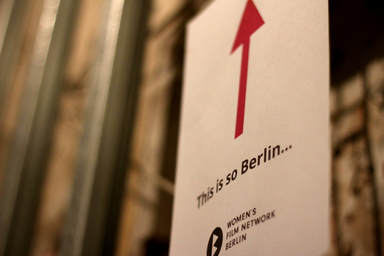 (photo: courtesy of Brace Bargo)
(photo: courtesy of Brace Bargo) Women’s voices, and those of many other identities, are conspicuously inconspicuous in the production of film and television. Most can recall an actress, but it is a much greater challenge to recount the work of a renowned female director, producer or writer, positions which shape the stories to be told. The difficulty recalling a favorite female producer or director is due to the fact that there just are not that many. From all these influential roles, women make up no more than twenty-seven percent of the field, and are even more limited as executive producers, directors and writers.[1] One must assume that the numbers for LGBTQ and ethnic communities do not fare much better. What we lose from this exclusion is the ability to engage with a too-often ignored part of itself, that is, the groups and identities excised from the simplified concepts of “everyday” culture, but nonetheless constitute a part of who we are as individuals and society. Women are denied their voice and the expression of their individual worldview. No two people see things exactly the same way, but all have been influenced by their surroundings. The external too often determines the internal, as how one looks changes the way one is greeted, treated, raised, employed, included, excluded, and even the way one speaks or is allowed to speak. It is a diversified and distributed network of power and norm-production that builds the frame within which our freedom and individuality exist.[2] Is it not fair then, that all those affected should be seen, heard, and take part in the conversation?
It is this void of the voiceless that is expanded through the exclusion of alternative perspectives from cinema and media and against which the Women’s Film Network Berlin positions itself. The WFNB “hosts meetups and events aimed to provide a space to inspire, empower, inform and collaborate.” And far from inciting revolution: “At the end of the day, most of us just want to make something.”[3] A space is thus provided for women filmmakers to collaborate and refine their work, and tools are shared to bring these perspectives to a wider audience. The Sputnik Kino, like all theaters, is a place where identities and ideas are produced and reproduced on the screen daily, and on this rainy Wednesday evening, newly refined voices were about to leave their mark.
The evening consisted of four short films written and directed by female or female-identifying filmmakers: The Glasshouse by Gianna Arni, Win Win by Nina Walter, Löwe am Montag/Lion on Monday by Leni Wesselman, and Out of Frame by Sophie Linnenbaum. All of the films showcased great production value, witty and clever writing and clear sense of vision. The themes were familiar: loneliness, failed ambitions, complicated relationships and regret. One is tempted to ask, what is so female about these films? That, however, is precisely the wrong question.
Contrary to the popular idea “men are from Mars, women are from Venus,” the concept of two distinct camps reduced down to their supposed core sexuality, all individuals have been shaped by similar social forces. Since the information we receive is filtered through a gendered lens, the internalization of this influence has individual effects; different perspectives on the same processes. These new takes on old themes come through in the works of the Berlin Female Filmmakers short film collection. The Glasshouse delves into failed fatherhood and reveals both a critique and expectation of masculinity through the lens of director Gianna Arni. Sophie Linnenbaum in Out of Frame explores not just feminist observations that women are seen and judged through the male gaze, but also the isolation of being the observer, the never seen, the camera itself.[4] Indeed, some of the films resonate with and reproduce Hollywood tropes as Löwe am Montag maintains the essentializing form of the eccentric girlfriend and the boyfriend that just can never understand. Win Win addresses the aspirations of women to achieve the beauty ideal, and uncritically replicates this narrative. Cliché, one could say, but so is Hollywood, because the cliché is what exists in everyone. It is not necessary that these films and other works of women tear down the system or address brand-new, specifically feminine things. Indeed, the limitation of female filmmakers to only talk about female things is already the reality, as so-called chick-flicks exemplify. It is significant that these filmmakers observed themes and feelings that affect them and thus touch on narratives that affect everyone, and through sharing their vision, they help clarify, and more importantly, take part in defining this ephemeral object we call culture.
Women in film does not necessarily mean feminism in film. To limit women to feminist stories and ideologies serves to further isolate their work from the rest. The films this evening had a tendency to reproduce rather than resist the patriarchal narrative. All four films had male protagonists, male narrators and the agency to act was largely in male hands. Mothers were caregivers, women characters prioritized beauty and eccentricity was a female trait. Men and women existed as categories without question. One must remember that liberation is the freedom to choose to accept the status quo and to identify with whatever one wishes. The first step to an equal culture is telling the story from all sides and being part of the larger conversation, to have a platform from which to confront and construct what it means to be a woman, and to share this process with a larger audience. The WFNB takes a great first step in amplifying the voices of the underrepresented from the small screen to the big screen, and eventually letting them reverberate through the halls, down the stairs, and in the exposed structure itself (where, coincidentally, one could very easily build an elevator).
[1] http://womenintvfilm.sdsu.edu/research/.
[2] Michel Foucault, Discipline and Punish, 1975.
[3] http://www.womenfilmberlin.com/.
[4] Laura Mulvey, Narrative Cinema and Visual Pleasure, 1989.
This post was originally published on Brace's blog. He graciously allowed us to post it on Femfilmfans in an edited form. To read Brace's original post in its entirety, please visit his blog at the link below:
https://threadbaer.wordpress.com/2018/02/07/female-filmmakers-berlin-pt-1/
It is this void of the voiceless that is expanded through the exclusion of alternative perspectives from cinema and media and against which the Women’s Film Network Berlin positions itself. The WFNB “hosts meetups and events aimed to provide a space to inspire, empower, inform and collaborate.” And far from inciting revolution: “At the end of the day, most of us just want to make something.”[3] A space is thus provided for women filmmakers to collaborate and refine their work, and tools are shared to bring these perspectives to a wider audience. The Sputnik Kino, like all theaters, is a place where identities and ideas are produced and reproduced on the screen daily, and on this rainy Wednesday evening, newly refined voices were about to leave their mark.
The evening consisted of four short films written and directed by female or female-identifying filmmakers: The Glasshouse by Gianna Arni, Win Win by Nina Walter, Löwe am Montag/Lion on Monday by Leni Wesselman, and Out of Frame by Sophie Linnenbaum. All of the films showcased great production value, witty and clever writing and clear sense of vision. The themes were familiar: loneliness, failed ambitions, complicated relationships and regret. One is tempted to ask, what is so female about these films? That, however, is precisely the wrong question.
Contrary to the popular idea “men are from Mars, women are from Venus,” the concept of two distinct camps reduced down to their supposed core sexuality, all individuals have been shaped by similar social forces. Since the information we receive is filtered through a gendered lens, the internalization of this influence has individual effects; different perspectives on the same processes. These new takes on old themes come through in the works of the Berlin Female Filmmakers short film collection. The Glasshouse delves into failed fatherhood and reveals both a critique and expectation of masculinity through the lens of director Gianna Arni. Sophie Linnenbaum in Out of Frame explores not just feminist observations that women are seen and judged through the male gaze, but also the isolation of being the observer, the never seen, the camera itself.[4] Indeed, some of the films resonate with and reproduce Hollywood tropes as Löwe am Montag maintains the essentializing form of the eccentric girlfriend and the boyfriend that just can never understand. Win Win addresses the aspirations of women to achieve the beauty ideal, and uncritically replicates this narrative. Cliché, one could say, but so is Hollywood, because the cliché is what exists in everyone. It is not necessary that these films and other works of women tear down the system or address brand-new, specifically feminine things. Indeed, the limitation of female filmmakers to only talk about female things is already the reality, as so-called chick-flicks exemplify. It is significant that these filmmakers observed themes and feelings that affect them and thus touch on narratives that affect everyone, and through sharing their vision, they help clarify, and more importantly, take part in defining this ephemeral object we call culture.
Women in film does not necessarily mean feminism in film. To limit women to feminist stories and ideologies serves to further isolate their work from the rest. The films this evening had a tendency to reproduce rather than resist the patriarchal narrative. All four films had male protagonists, male narrators and the agency to act was largely in male hands. Mothers were caregivers, women characters prioritized beauty and eccentricity was a female trait. Men and women existed as categories without question. One must remember that liberation is the freedom to choose to accept the status quo and to identify with whatever one wishes. The first step to an equal culture is telling the story from all sides and being part of the larger conversation, to have a platform from which to confront and construct what it means to be a woman, and to share this process with a larger audience. The WFNB takes a great first step in amplifying the voices of the underrepresented from the small screen to the big screen, and eventually letting them reverberate through the halls, down the stairs, and in the exposed structure itself (where, coincidentally, one could very easily build an elevator).
[1] http://womenintvfilm.sdsu.edu/research/.
[2] Michel Foucault, Discipline and Punish, 1975.
[3] http://www.womenfilmberlin.com/.
[4] Laura Mulvey, Narrative Cinema and Visual Pleasure, 1989.
This post was originally published on Brace's blog. He graciously allowed us to post it on Femfilmfans in an edited form. To read Brace's original post in its entirety, please visit his blog at the link below:
https://threadbaer.wordpress.com/2018/02/07/female-filmmakers-berlin-pt-1/
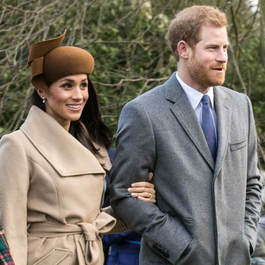 (photo: Mark Jones, Wikipedia)
(photo: Mark Jones, Wikipedia) By Christina Schultz
Yesterday, May 19, the world witnessed the royal wedding of British Prince Harry, brother of Prince William, son of Charles and Diana, grandson of the long-reigning monarch Queen Elizabeth II, and Meghan Markle, the American biracial divorcée actress best known for her role as Rachel Zane in Suits (2011-), an American legal drama show airing on the USA Network. Their wedding was a beautiful spectacle to behold with the pomp and circumstance you would expect from such a joyous royal occasion. I was captivated by the wedding like so many others who turned up in Windsor to catch a glimpse of the proceedings. I hate to admit it, but the little princess in me, conditioned by my upbringing of consuming Disney films, playing with Barbies, and societal gender expectations, was in full force yesterday. I couldn’t help but regress to the days of my youth when I daydreamed about meeting Harry or William to then transform into a full-fledged royal princess (or duchess, I’m not picky) complete with a fairytale wedding that would cost as much as the entire budget of a small country. Feminist enlightenment be damned.
Now you might be thinking who cares about all this conservative heteronormative nonsense? Why watch a royal wedding at all? It’s a display of the utmost sexism and elitism. While this is understandable, you don’t have to be an obsessed fan of the Royal Family to find Harry and Meghan’s relationship and their union as husband and wife intriguing. I certainly find it intriguing on several levels because it breaks with so many of the stuffy British traditions we have come to know over the past centuries. Meghan is a true breath of fresh air to the endangered species that is the British monarchy. She does not at all fit the “blue blood” profile as a half African-American actress with a divorce and success under her belt. Her show Suits has been nominated for several awards and averaged a few million viewers per episode over the course of its seven seasons (by the end the numbers were more around the one million range; it has been renewed for an eighth season).
In becoming a princess, however, she had to make a huge sacrifice. She gave up her acting career and deleted all social media. She now belongs to the royal family and will have to play by their rules of conduct and etiquette. Naturally, this has been met with skepticism by many people, myself included. Don’t get me wrong, I couldn’t be happier that Harry and Meghan are together. She has tamed the former wild child and royal pain in the ass of the Windsor family and the two seem oh so happy together. But the feminist in me cannot help but think really Meghan?!?! Especially since she is a self-identifying feminist (or was?).
By giving up her career and taking part in an “event steeped in patriarchal tradition,” it seems like we as society are taking quite a few steps back.[1] However, the most modern wedding the royal family has ever seen did break with some of the typical traditions and, for some, actually brought feminism to the occasion.[2] And while I'm not 100% convinced by that idea, I do agree with Valerie Wade, historian and archivist, that “the wedding is an opportunity for crucial political issues to get some mainstream attention. ‘Anything that sort of helps us think about race and gender and class in an accessible way is good,’ said Wade, ‘because I think a lot of those ideas sort of get stuck in the academy.’”[1] Arguably race, and not feminism, was the hot topic yesterday with newscasters and commentators because the wedding proudly included African-American culture and excellence, a touching tribute to Meghan’s heritage, in an otherwise very white, stuffy, Anglo-Saxon, upper crust crowd. The royal family didn’t know what to make of the Reverend Michael Curry as he delivered a passionate speech with the mantra “love is the way.” It was a fitting mantra, however, especially considering that love was a powerful enough motivator for Meghan to dedicate herself fully to Harry and her new life as the Duchess of Sussex.
Whatever side of the pond you find yourself on, the royal wedding, and weddings in general, trigger a mixed bag of emotions, associations and reactions. It will be interesting to see how the couple fares in the coming years in addressing political issues and whether Meghan Markle retains her freedom and feminist strength. I see it as a good sign, however, that one of the charities she (and Harry) support is the Myna Mahila foundation, which empowers "women to speak about issues they are most afraid to discuss aloud and employs "women from urban slums in Mumbai to manufacture and sell affordable sanitary pads back into their communities, improving menstrual hygiene, providing stable employment, and building a trusted network." I hope we can expect more like this from Meghan as she settles into her new “career.”
Yesterday, May 19, the world witnessed the royal wedding of British Prince Harry, brother of Prince William, son of Charles and Diana, grandson of the long-reigning monarch Queen Elizabeth II, and Meghan Markle, the American biracial divorcée actress best known for her role as Rachel Zane in Suits (2011-), an American legal drama show airing on the USA Network. Their wedding was a beautiful spectacle to behold with the pomp and circumstance you would expect from such a joyous royal occasion. I was captivated by the wedding like so many others who turned up in Windsor to catch a glimpse of the proceedings. I hate to admit it, but the little princess in me, conditioned by my upbringing of consuming Disney films, playing with Barbies, and societal gender expectations, was in full force yesterday. I couldn’t help but regress to the days of my youth when I daydreamed about meeting Harry or William to then transform into a full-fledged royal princess (or duchess, I’m not picky) complete with a fairytale wedding that would cost as much as the entire budget of a small country. Feminist enlightenment be damned.
Now you might be thinking who cares about all this conservative heteronormative nonsense? Why watch a royal wedding at all? It’s a display of the utmost sexism and elitism. While this is understandable, you don’t have to be an obsessed fan of the Royal Family to find Harry and Meghan’s relationship and their union as husband and wife intriguing. I certainly find it intriguing on several levels because it breaks with so many of the stuffy British traditions we have come to know over the past centuries. Meghan is a true breath of fresh air to the endangered species that is the British monarchy. She does not at all fit the “blue blood” profile as a half African-American actress with a divorce and success under her belt. Her show Suits has been nominated for several awards and averaged a few million viewers per episode over the course of its seven seasons (by the end the numbers were more around the one million range; it has been renewed for an eighth season).
In becoming a princess, however, she had to make a huge sacrifice. She gave up her acting career and deleted all social media. She now belongs to the royal family and will have to play by their rules of conduct and etiquette. Naturally, this has been met with skepticism by many people, myself included. Don’t get me wrong, I couldn’t be happier that Harry and Meghan are together. She has tamed the former wild child and royal pain in the ass of the Windsor family and the two seem oh so happy together. But the feminist in me cannot help but think really Meghan?!?! Especially since she is a self-identifying feminist (or was?).
By giving up her career and taking part in an “event steeped in patriarchal tradition,” it seems like we as society are taking quite a few steps back.[1] However, the most modern wedding the royal family has ever seen did break with some of the typical traditions and, for some, actually brought feminism to the occasion.[2] And while I'm not 100% convinced by that idea, I do agree with Valerie Wade, historian and archivist, that “the wedding is an opportunity for crucial political issues to get some mainstream attention. ‘Anything that sort of helps us think about race and gender and class in an accessible way is good,’ said Wade, ‘because I think a lot of those ideas sort of get stuck in the academy.’”[1] Arguably race, and not feminism, was the hot topic yesterday with newscasters and commentators because the wedding proudly included African-American culture and excellence, a touching tribute to Meghan’s heritage, in an otherwise very white, stuffy, Anglo-Saxon, upper crust crowd. The royal family didn’t know what to make of the Reverend Michael Curry as he delivered a passionate speech with the mantra “love is the way.” It was a fitting mantra, however, especially considering that love was a powerful enough motivator for Meghan to dedicate herself fully to Harry and her new life as the Duchess of Sussex.
Whatever side of the pond you find yourself on, the royal wedding, and weddings in general, trigger a mixed bag of emotions, associations and reactions. It will be interesting to see how the couple fares in the coming years in addressing political issues and whether Meghan Markle retains her freedom and feminist strength. I see it as a good sign, however, that one of the charities she (and Harry) support is the Myna Mahila foundation, which empowers "women to speak about issues they are most afraid to discuss aloud and employs "women from urban slums in Mumbai to manufacture and sell affordable sanitary pads back into their communities, improving menstrual hygiene, providing stable employment, and building a trusted network." I hope we can expect more like this from Meghan as she settles into her new “career.”
Speaking of careers, would you be able to give up your career to be with your partner? Leave your response in the comment section. We'd love to hear what you think!
| You can read the Femfilmfans team members' answers on Instagram this week! |
Special thanks to Caro for hosting me and to Robert for the idea to write about the “feminist dilemma!”
[1] North, Anna. “The fraught gender and racial politics of the royal wedding, explained.” Vox, May 15, 2018. https://www.vox.com/2018/5/15/17335946/meghan-markle-royal-wedding-2018-prince-harry-windsor-race-gender.
[2] Alexander, Ella. "5 ways Meghan Markle brought feminism to the royal wedding." Harper's Bazaar, May 18, 2018. https://www.harpersbazaar.com/uk/bazaar-brides/a20757742/meghan-markle-feminism-royal-wedding/.
[1] North, Anna. “The fraught gender and racial politics of the royal wedding, explained.” Vox, May 15, 2018. https://www.vox.com/2018/5/15/17335946/meghan-markle-royal-wedding-2018-prince-harry-windsor-race-gender.
[2] Alexander, Ella. "5 ways Meghan Markle brought feminism to the royal wedding." Harper's Bazaar, May 18, 2018. https://www.harpersbazaar.com/uk/bazaar-brides/a20757742/meghan-markle-feminism-royal-wedding/.
Archives
February 2020
September 2019
December 2018
November 2018
September 2018
July 2018
June 2018
May 2018

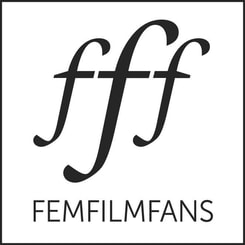
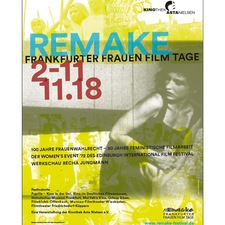
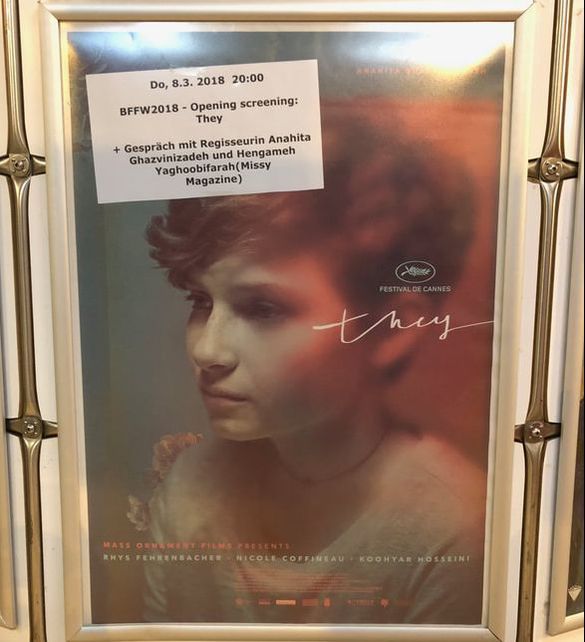
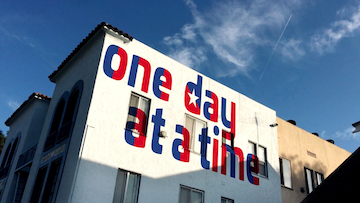
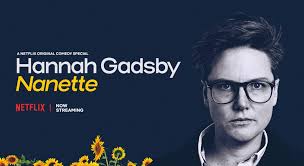
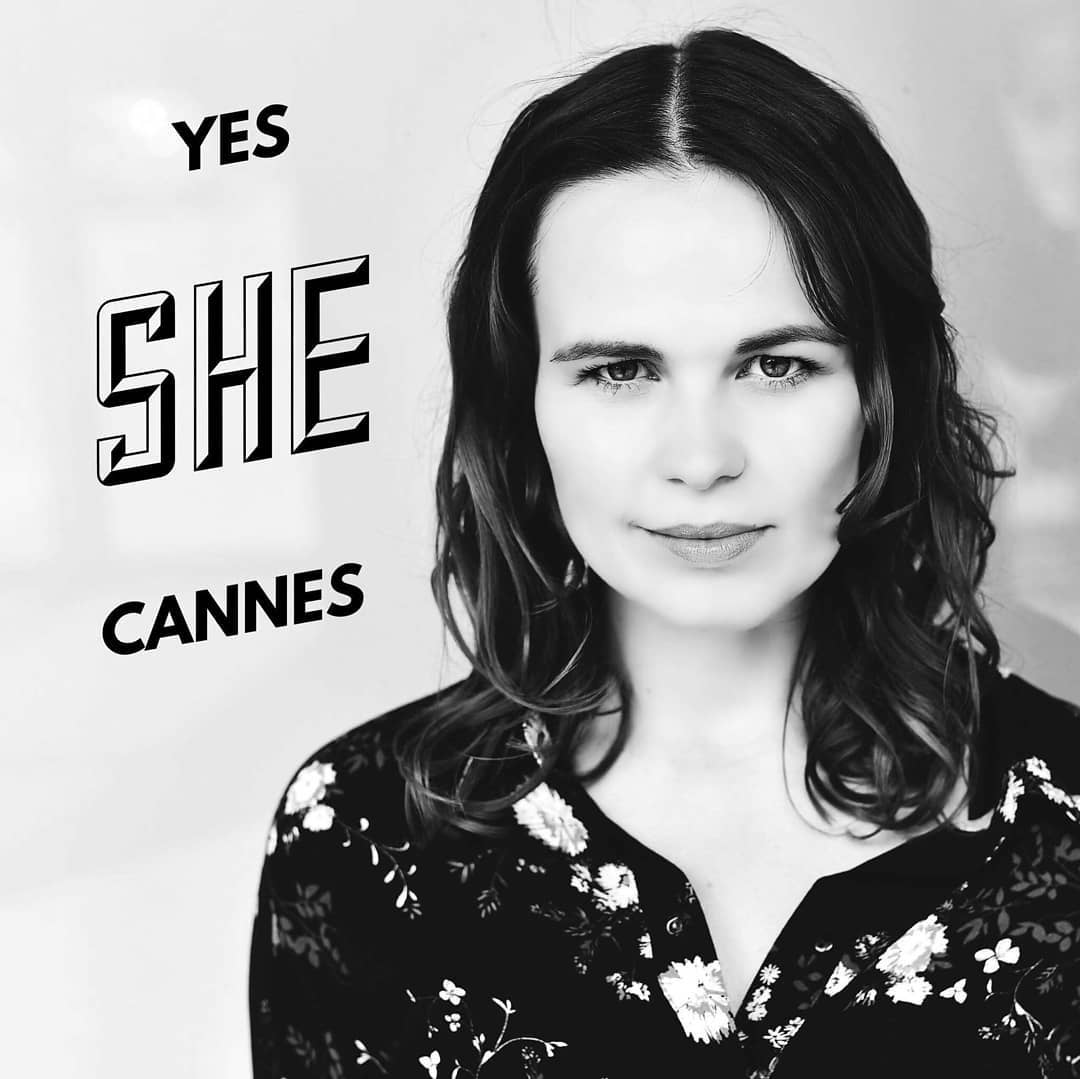
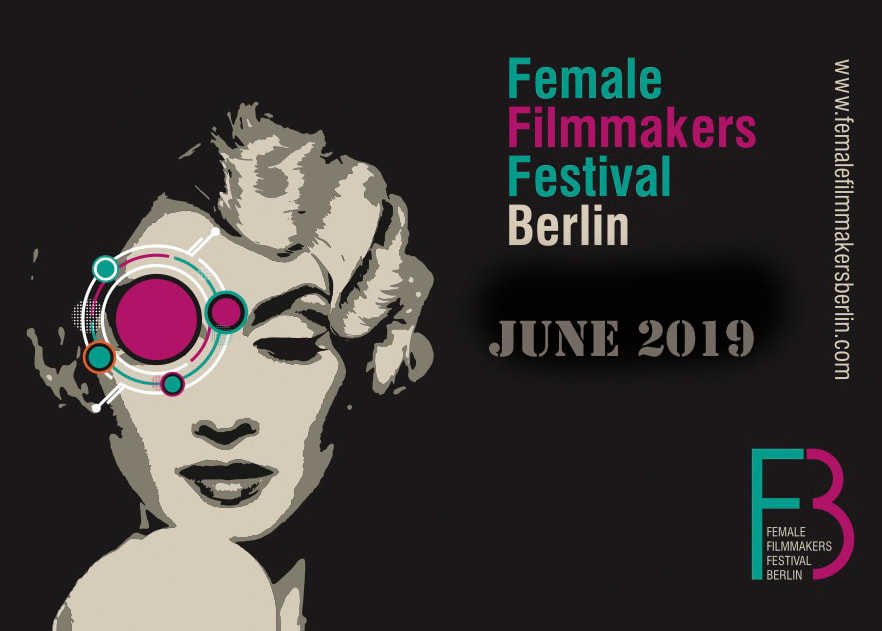
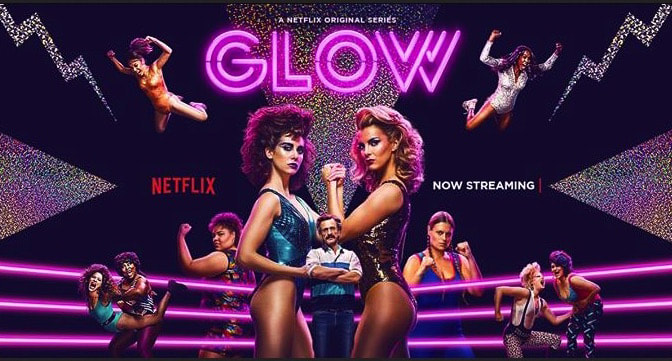
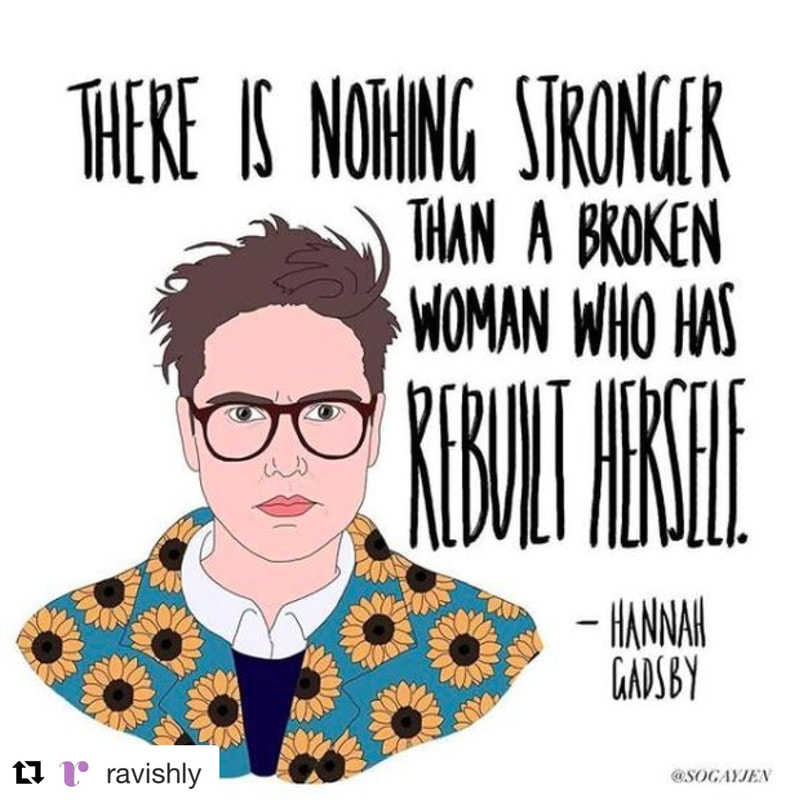
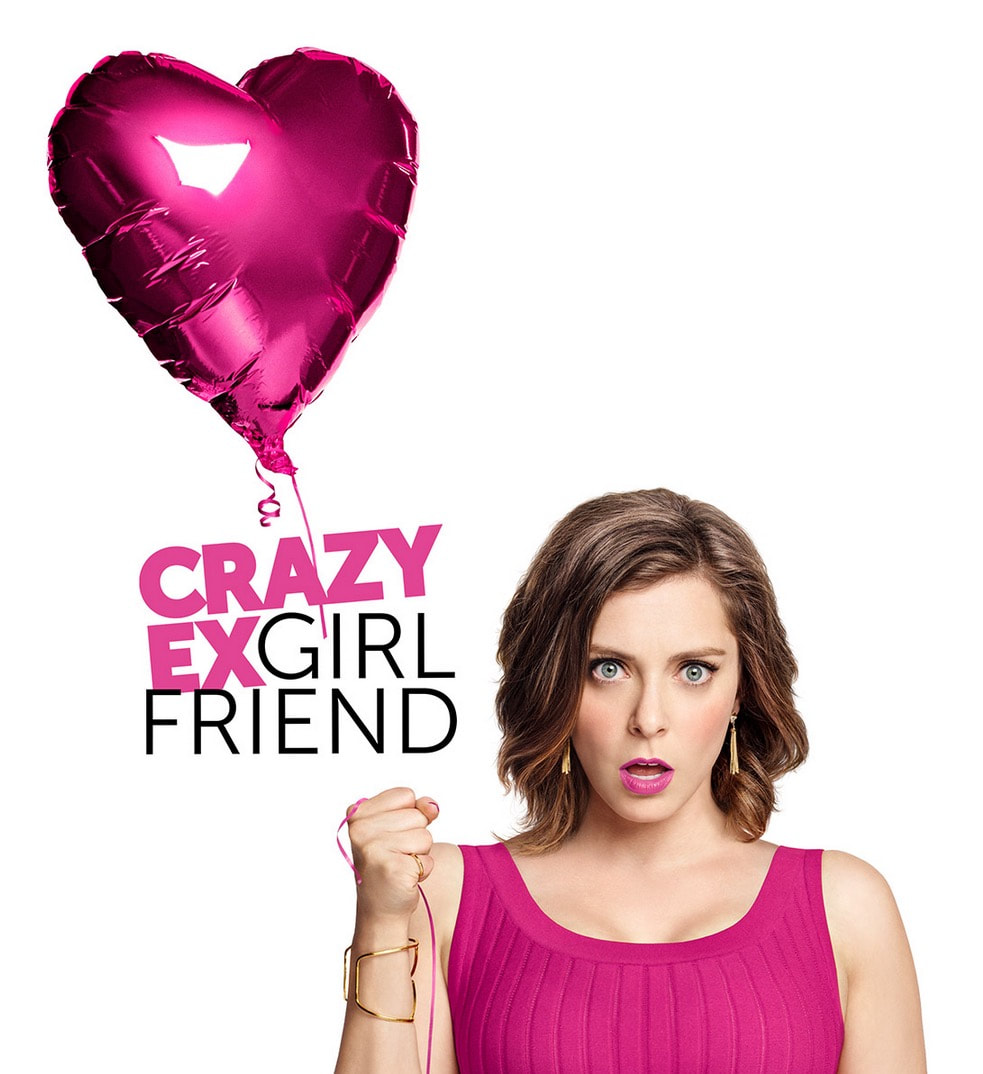
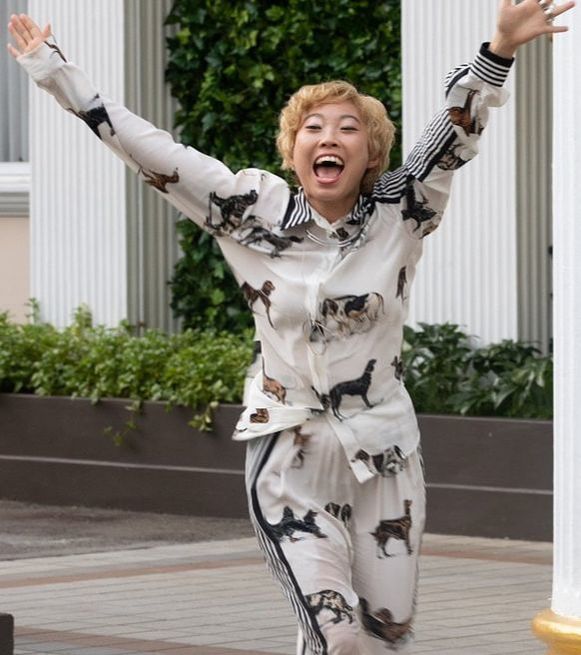
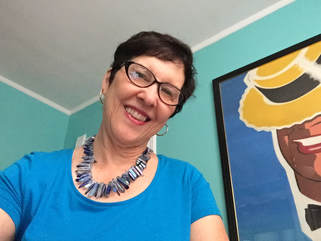
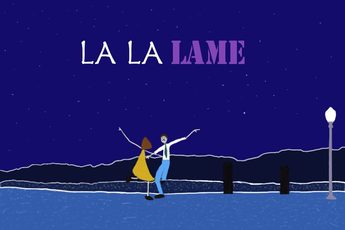
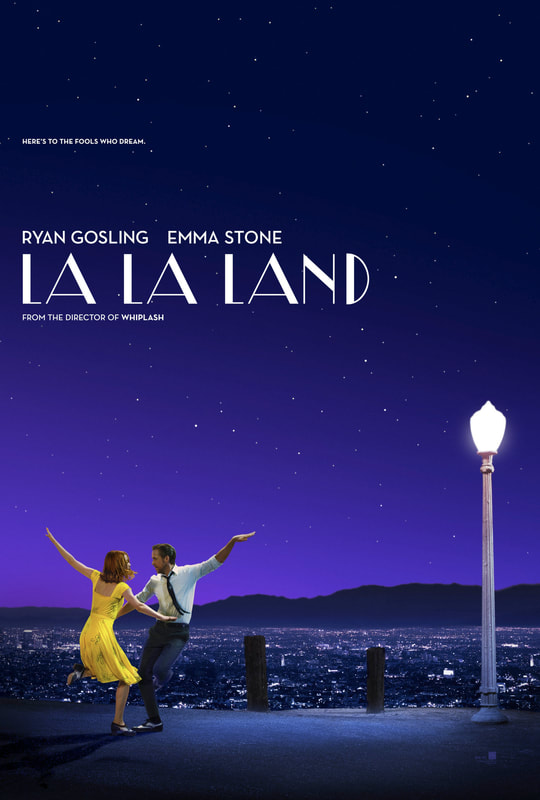
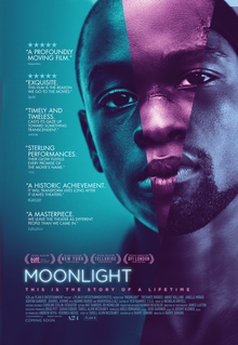
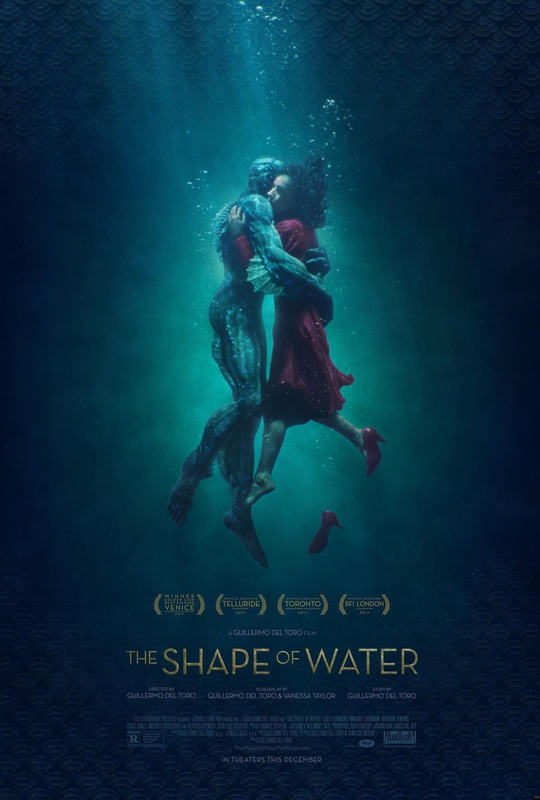
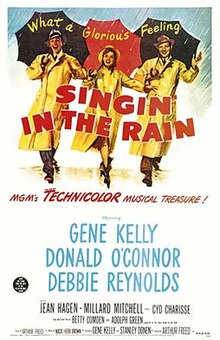
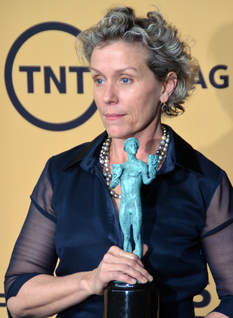
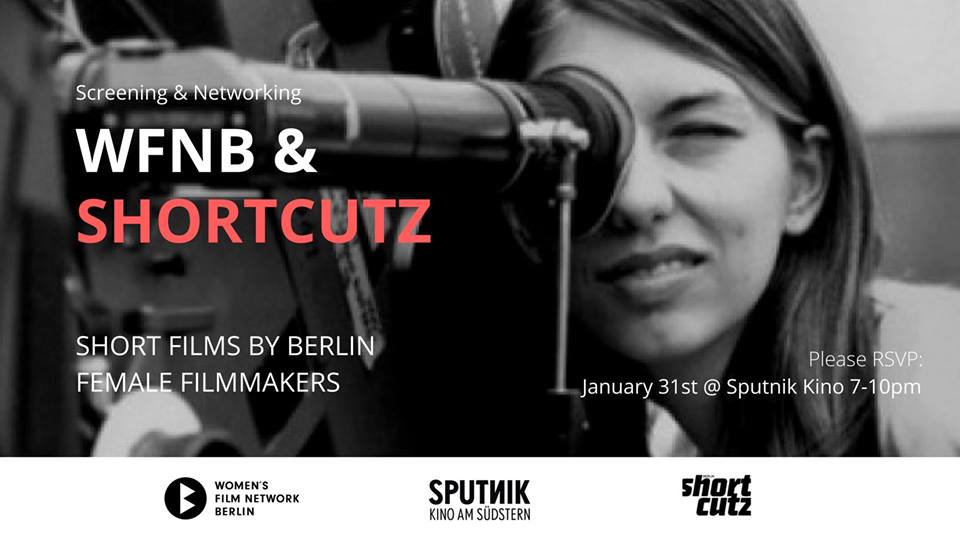
 RSS Feed
RSS Feed
